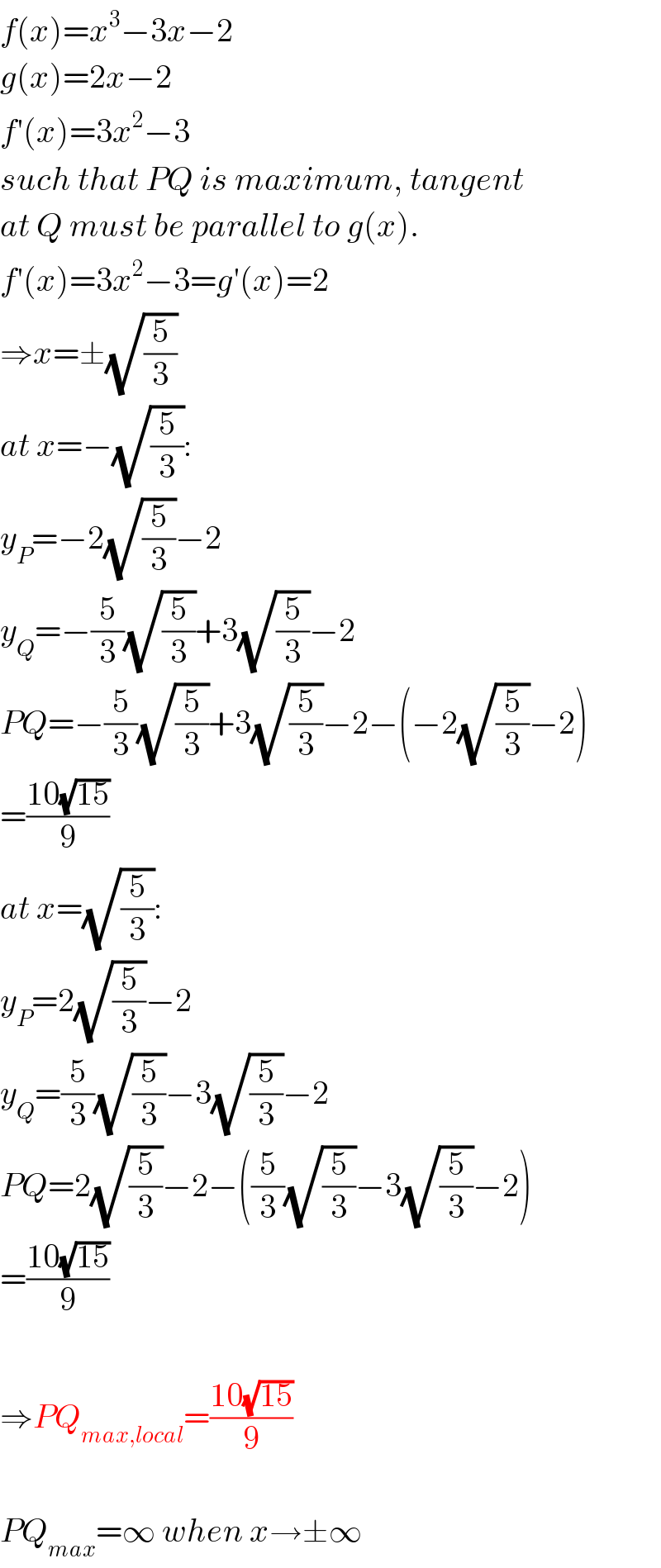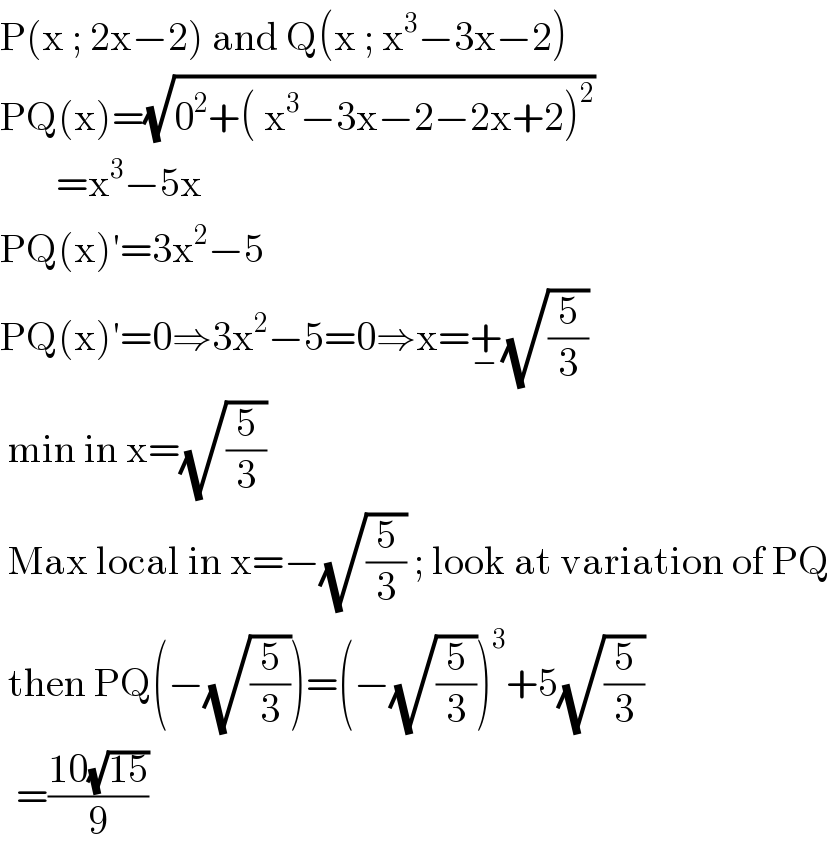
Question and Answers Forum
Question Number 108864 by I want to learn more last updated on 19/Aug/20

Commented by I want to learn more last updated on 19/Aug/20

Answered by mr W last updated on 19/Aug/20

Commented by I want to learn more last updated on 25/Aug/20

Answered by Aziztisffola last updated on 19/Aug/20

Commented by I want to learn more last updated on 25/Aug/20

